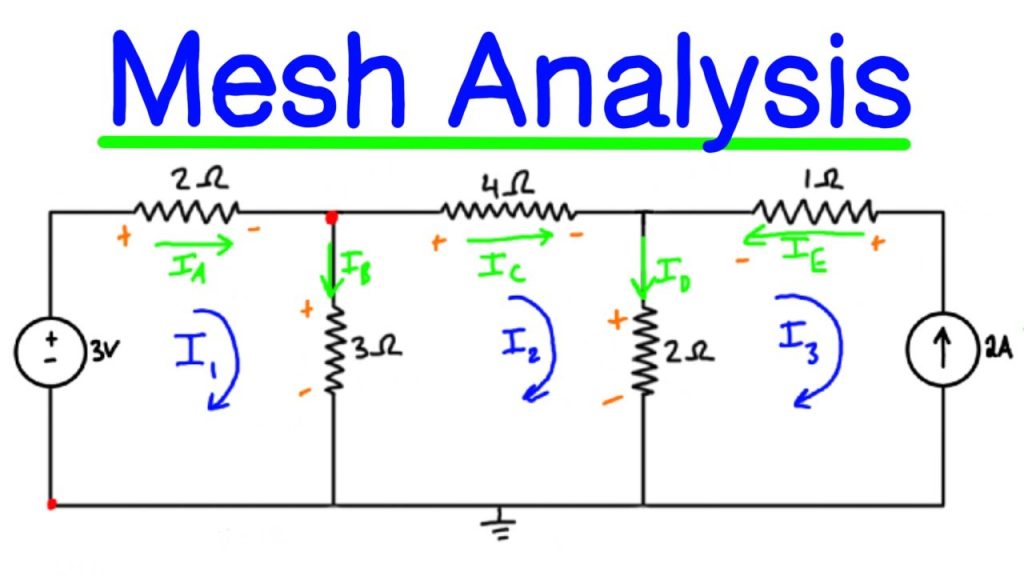Meshes
A ’mesh’ (also called a loop) is simply a path through a circuit that starts and ends at the same place. For the purpose of mesh analysis, a mesh is a loop that does not enclose other loops.
Mesh Analysis
Similar to nodal analysis, mesh analysis is a formalized procedure based on KVL equations. A caveat: mesh analysis can only be used on ’planar’ circuits (i.e. there are no crossed, but unconnected, wires in the circuit diagram.)
Steps:
1. Draw circuit in planar form (if possible.)
2. Identify meshes and name mesh currents. Mesh currents should be in the clockwise direction. The current in a branch shared by two meshes is the difference of the two mesh currents.
3. Write a KVL equation in terms of mesh currents for each mesh.
4. Solve the resulting system of equations.
Complication in Mesh Analysis
1. Dependent Voltage Sources Solution: Same procedure, but write the dependency variable in terms of mesh currents.
2. Independent Current Sources
Solution: If current source is not on a shared branch, then we have been given one of the mesh currents! If it is on a shared branch, then use a ’super-mesh’ that encircles the problem branch. To make up for the mesh equation you lose by doing this, use the mesh current relationship implied by the current source (i.e. I2 −I1 = 4mA).
3. Dependent Current Sources
Solution: Same procedure as for an independent current source, but with an extra step to eliminate the dependency variable. Write the dependency variable in terms of mesh currents.


